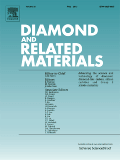
DIAMOND AND RELATED MATERIALS
Scope & Guideline
Elevating the discourse on cutting-edge materials.
Introduction
Aims and Scopes
- Synthesis and Growth of Diamond Materials:
Research on various methods for synthesizing diamond materials, including chemical vapor deposition (CVD), high-pressure high-temperature (HPHT) techniques, and novel approaches like microwave plasma synthesis. - Characterization Techniques:
Studies utilizing advanced characterization techniques such as Raman spectroscopy, X-ray diffraction, and electron microscopy to investigate the structural, optical, and electronic properties of diamond and related materials. - Applications in Electronics and Optoelectronics:
Exploration of diamond's unique electronic properties for applications in high-power, high-frequency electronics, and optoelectronic devices, including sensors and quantum computing. - Energy Storage and Conversion:
Investigations into the use of diamond and carbon-based materials in energy storage systems, such as batteries and supercapacitors, focusing on enhancing performance through innovative material designs. - Environmental and Biomedical Applications:
Research on the application of diamond and carbon materials in environmental remediation and biomedical fields, including drug delivery systems, biosensors, and catalysts for pollutant degradation.
Trending and Emerging
- Sustainable and Green Synthesis:
A growing trend towards eco-friendly methods for synthesizing diamond and carbon materials, utilizing biomass and waste materials, aligns with global sustainability goals. - Nanostructured and Hybrid Materials:
An increasing focus on the development of nanostructured and hybrid materials, combining diamond or carbon with other materials to enhance properties for specific applications. - Quantum and Spintronics Applications:
Research into the use of diamond and related materials in quantum computing and spintronics is on the rise, reflecting the growing interest in these advanced technologies. - Electrocatalysis and Energy Applications:
Emerging studies on the use of diamond-based materials for electrocatalysis and energy conversion processes, such as hydrogen evolution and CO2 reduction, indicate a shift towards energy-related applications. - Advanced Characterization Techniques:
Increased use of cutting-edge characterization methods, including in situ techniques and advanced spectroscopic methods, to better understand the properties and behaviors of diamond and related materials.
Declining or Waning
- Traditional Diamond Applications:
The application of diamond in traditional fields such as cutting tools and abrasives is waning as newer materials and technologies emerge, potentially impacting the volume of related research. - Basic Studies on Diamond Properties:
There has been a decrease in publications purely focused on fundamental studies of diamond properties without practical applications, as the field shifts towards more applied research. - Low Temperature CVD Diamond Growth:
Research specifically centered around low-temperature CVD diamond growth techniques has become less frequent, possibly due to the development of more efficient methods and materials.
Similar Journals
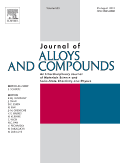
Journal of Alloys and Compounds
Shaping the Landscape of Alloy InnovationsJournal of Alloys and Compounds, published by Elsevier Science SA, stands at the forefront of materials research, focusing on the properties, applications, and innovations within alloys and compounds. With an impressive impact factor and prestigious rankings placing it in the Q1 quartile across multiple related categories—including Materials Chemistry, Mechanical Engineering, and Mechanics of Materials—this journal is recognized for its significant contributions to the field. Researchers and professionals engaged in metallurgy, materials science, and engineering will find it a critical resource that encompasses groundbreaking studies, insightful reviews, and essential findings. The journal has a strong influence, as evidenced by its Scopus rankings—ranking 14th in Metals and Alloys and 28th in Mechanics of Materials, indicating a robust global impact. As it continues to publish cutting-edge research from 1991 to 2024, the Journal of Alloys and Compounds serves as a vital platform for the exchange of knowledge, thereby advancing our understanding of complex materials and fostering innovation in diverse applications.
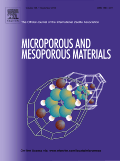
Microporous and Mesoporous Materials
Connecting Researchers in the World of Microporous MaterialsMicroporous and Mesoporous Materials is a leading academic journal published by ELSEVIER, specializing in the field of porosity characterization and applications of microporous and mesoporous materials. With an impactful Q1 ranking in various categories, including Chemistry, Condensed Matter Physics, and Materials Science, this journal serves as a vital resource for researchers, professionals, and students focused on advancing the understanding and application of these materials. Established in 1998 and set to continue its influence until 2024, the journal's rigorous peer-review process ensures the dissemination of high-quality research findings. Additionally, its commitment to open access publishing broadens accessibility, fostering an inclusive community dedicated to innovation in nanoscience, materials physics, and engineering. The journal's Scopus rankings highlight its prestigious standing, placing it among the top percentile within pertinent fields. For those engaged in cutting-edge research or education within these sectors, Microporous and Mesoporous Materials remains an essential journal for current advancements and insights.
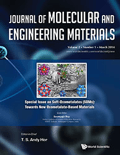
Journal of Molecular and Engineering Materials
Catalyzing Progress in Materials Engineering and Molecular ResearchThe Journal of Molecular and Engineering Materials, published by World Scientific Publishing Co Pte Ltd, is a leading peer-reviewed journal that focuses on the intricate relationship between molecular science and engineering practices. With the ISSN 2251-2373 and E-ISSN 2251-2381, this journal aims to foster the exchange of cutting-edge research and developments within the fields of materials science, molecular engineering, and related applications. Although the journal currently does not operate under an Open Access model, it remains a vital resource for researchers, professionals, and students seeking in-depth knowledge and innovative methodologies in material design and engineering. The journal's esteemed reputation is reflected in its commitment to publishing high-quality research that addresses contemporary challenges and opportunities in material science, thereby contributing to advancements in technology and industry.

Korean Journal of Materials Research
Advancing the Frontiers of Materials ScienceKorean Journal of Materials Research is a pivotal publication in the field of materials science, offering a platform for innovative research and comprehensive reviews in miscellaneous materials applications. Published by the MATERIALS RESEARCH SOC KOREA, this journal has been a valuable resource since its inception in 2007 and continues to disseminate vital findings through 2024. Although currently categorized in Q4 of the Materials Science quartiles, the journal is committed to advancing knowledge and fostering research collaboration within the scientific community. With an ISSN of 1225-0562 and an E-ISSN of 2287-7258, the journal aims to bridge gaps in research and practice, appealing to a diverse audience of researchers, professionals, and students interested in the latest advancements in materials science. While access to content may not be open, the journal's impact in the regional and global research landscape is steadily growing, as indicated by its Scopus ranking in the 7th percentile of General Materials Science. Engage with the Korean Journal of Materials Research to stay at the forefront of materials innovation!

Inorganic and Nano-Metal Chemistry
Advancing Knowledge in Inorganic Chemistry and Nanotechnology.Inorganic and Nano-Metal Chemistry is a premier journal published by Taylor & Francis Inc, focusing on innovative research and advancements in the fields of inorganic chemistry and nano-metal applications. With an increasing impact in the academic community, this journal has established itself within the Q3 category of both Inorganic Chemistry and Physical and Theoretical Chemistry as of 2023, reflecting its global recognition and influence. The journal is accessible as an Open Access publication, ensuring that research findings are freely available to a broad audience, promoting transparency and collaboration in scientific exploration. Based in the United Kingdom, Inorganic and Nano-Metal Chemistry aims to disseminate high-quality peer-reviewed articles that not only highlight fundamental studies but also push the boundaries of technological applications in areas such as catalysis, materials science, and nanotechnology. Researchers, professionals, and students will find this journal an invaluable resource for the latest developments and interdisciplinary insights in the ever-evolving landscape of inorganic and nano-metal chemistry.

MRS Advances
Connecting Ideas, Inspiring InnovationsMRS Advances, published by Springer Heidelberg, is an esteemed academic journal that serves as a vital platform for disseminating cutting-edge research in the fields of condensed matter physics, materials science, and mechanical engineering. With an ISSN of 2731-5894 and an E-ISSN of 2059-8521, the journal is hosted in Switzerland and encompasses an impressive spectrum of innovative studies that impact both theoretical and practical applications. Throughout its converged years from 2012 and continuing through 2024, MRS Advances has established itself with notable rankings, including Q4 in condensed matter physics and Q3 in several related categories. This journal not only enriches the academic community with its rigorous peer-reviewed articles, but also encourages open discussions that further advance research innovations. Although currently not designated as an open-access journal, its accessibility through institutional subscriptions ensures that professionals, researchers, and students can engage with the latest advancements in the material science arena. Emphasizing its relevance, MRS Advances is dedicated to fostering interdisciplinary collaboration and inspiring new discoveries within the global research community.

Journal of Superhard Materials
Advancing the frontiers of superhard materials research.The Journal of Superhard Materials, published by PLEIADES PUBLISHING INC, is a premier journal dedicated to advancing the field of superhard materials, including their synthesis, properties, and applications. With an ISSN of 1063-4576 and E-ISSN 1934-9408, this journal serves as an essential resource for researchers and professionals focused on material science and inorganic chemistry. As of 2023, it ranks in the Q3 category for both Inorganic Chemistry and Materials Science (miscellaneous), establishing its growing significance within the scientific community. The journal, located in the United States at PLEIADES HOUSE, New York, welcomes submissions that contribute innovative findings in the realm of superhard materials, fostering collaboration and knowledge exchange among scholars. Researchers interested in cutting-edge developments and applications in this niche area will find valuable insights and findings published in this journal, encouraging continued exploration and discovery in the materials sciences.

RUSSIAN JOURNAL OF INORGANIC CHEMISTRY
Advancing Knowledge in Inorganic ScienceThe Russian Journal of Inorganic Chemistry is a distinguished publication that delves into the fundamental and applied aspects of inorganic chemistry. Published by MAIK Nauka/Interperiodica/Springer, this journal has established itself as a vital resource for researchers, professionals, and students alike, contributing significantly to the fields of Inorganic Chemistry, Materials Science, and Physical and Theoretical Chemistry. With an ISSN of 0036-0236 and an E-ISSN of 1531-8613, the journal is indexed for easy access and citation. Though the journal currently operates under a subscription model, its commitment to disseminating high-quality research and fostering scientific discourse remains steadfast. The journal has been maintaining a consistent record since its inception, and its positioning in the Q3 quartile across various chemistry categories in 2023 underscores its relevance in the academic community. As it continues through its converged years from 1996 to 2024, the Russian Journal of Inorganic Chemistry plays a pivotal role in enhancing the understanding and advancement of inorganic chemistry, making it an indispensable tool for anyone engaged in this dynamic field.
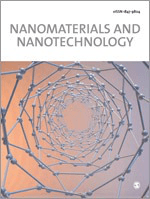
Nanomaterials and Nanotechnology
Disseminating Insights for Tomorrow's InnovationsNanomaterials and Nanotechnology is a premier journal published by HINDAWI LTD, dedicated to advancing knowledge in the rapidly evolving fields of nanomaterials and nanoscale applications. Established as an Open Access platform since 2011, the journal aims to disseminate high-quality research that provides insights into nanotechnology's manifold aspects, including biotechnology, ceramics and composites, as well as electrical and electronic engineering. With a compelling impact factor reflected in its robust Scopus rankings—placing it in the 80th percentile in Engineering and the 72nd percentile in Biotechnology—it stands as a key resource for researchers, professionals, and students seeking to stay at the forefront of innovation in materials science. The journal occupies a distinguished position in the academic community, featuring studies that explore the synthesis, characterization, and application of nanomaterials, thereby contributing significantly to scientific discourse and technological advancement in this critical area.
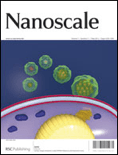
Nanoscale
Exploring Breakthroughs in Nanoscale Research.Nanoscale is a premier academic journal published by the Royal Society of Chemistry, dedicated to advancing the field of nanoscience and nanotechnology. With both its ISSN (2040-3364) and E-ISSN (2040-3372) ensuring wide accessibility, the journal is renowned for its high-impact research contributions, reflected in its impressive 2023 Impact Factor and prestigious Q1 ranking in both Materials Science (Miscellaneous) and Nanoscience and Nanotechnology categories. Since its inception in 2009, Nanoscale has fostered a collaborative platform where leading researchers from around the globe share their innovative findings across a multitude of topics spanning from material synthesis to applications in nanotechnology. The journal not only serves as a valuable resource for professionals, researchers, and students but also actively engages the academic community in discussing emerging trends, thus shaping the future of nanoscience. Situated in the heart of the UK at Thomas Graham House, Science Park, Milton Rd, Cambridge CB4 0WF, Nanoscale remains a key publication for those looking to keep abreast of the latest breakthroughs in an ever-evolving field.